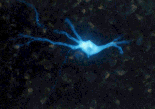| Sponsored by Wake Forest University School of Medicine and National Families in Action | |||
| Glossary - L | |||
| This glossary comes from False Messengers: How Addictive Drugs Change the Brain, by David Friedman, PhD, and Sue Rusche, Harwood Academic Publishers, Amsterdam, The Netherlands, 1999. A
| B | C
| D | E
| F | G
| H | I
|
|
|||
| L LAAM A very long-lasting opiate agonist recently approved for the treatment of opiate addiction. Ligand Any chemical that binds to a receptor. Ligands may be agonists or antagonists. Limbic system A set of brain structures that generates our feelings, emotions, and motivations. It is also important in learning and memory. Localization of function A principal of brain organization that states that specific places (circuits) in the brain carry out specific functions. Locus coeruleus A group of neurons (nucleus) that is the source of all of the neurotransmitter norepinephrine in the brain.
|
|
Long-term effects The effects seen when a drug is used repeatedly over weeks, months, or years. These effects may outlast drug use. Long term memory Enduring memories about things,
places, and events. LSD A hallucinogenic drug that acts on the serotonin receptor.
|
|
| Home | For Journalists | For the States | Science Update | Links | Glossary | About |
Last Revision
info@addictionstudies.org

